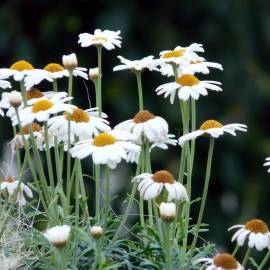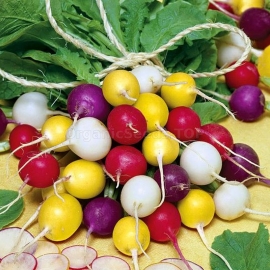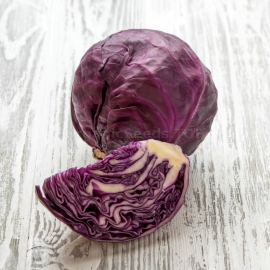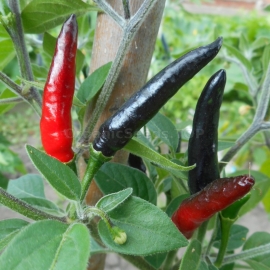





«Maikonigin» - Leucanthemum Vulgare Seeds
1.14 €
Easily grown in average, dry to medium, well-drained soils in full sun. Tolerates some light shade, particularly in hot summer climates. Remove spent flower heads to promote additional bloom. Divide clumps as needed (every 2-3 years) to maintain vigor.
-
Leucanthemum vulgare «Maikonigin»
Easily grown in average, dry to medium, well-drained soils in full sun. Tolerates some light shade, particularly in hot summer climates.
Remove spent flower heads to promote additional bloom. Divide clumps as needed (every 2-3 years) to maintain vigor. Consider cutting stems back to basal leaves after flowering. Plants will spread in the garden by rhizomes.
Sowing
Sow in August to September for early summer flowering the next year or sow directly where they are to flower in March to April.
Sowing Indoors
Sow seed on the surface of lightly firmed, moist seed compost in pots or trays. Cover seed with a light sprinkling of compost or vermiculite. Keep at a temperature of between 15 to 20°C (59 to 68°F). After sowing, do not exclude light as this helps germination. Keep the surface of the compost moist but not waterlogged; germination can take between 10 and 30 days. When large enough to handle, transplant seedlings into 7.5cm (3in) pots or trays. Gradually acclimatise to outdoor conditions for 10 to 15 days before planting out after all risk of frost, 30 to 45cm (12 to 18in) apart. For best results, provide any ordinary, well-drained soil in full sun.
Sowing Direct
Seeds can be broadcast in drifts of colour or they can be sown in more formal beds and borders. Sow in spring to early summer when all risk of frost has gone. Sow the seed in short drills 12mm (½ in) deep from March to May, at temperatures around 20°C (68°F). Cover lightly with soil, mark the sowing areas with a ring of light coloured sand and label if sowing more than one annual in the same bed. Seeds germinate in less than two weeks. The seedlings will appear in rows approx 6-8 weeks after planting and can be told from nearby weed seedlings quite easily. Thin the seedlings out so they are finally 4 to 6 in apart by early summer. Alternatively, leave them to grow as small clumps, of 4 to 6 plants every 12in or so. Compost should be kept slightly moist, but not wet at all times.
Cultivation
If deadheaded, you will get a second flush of blooms. Its seeds are set as early as June right through to August. Ungrazed plants can produce as many as 4000 seeds, making it a good coloniser of bare ground. However, it does not like nutrient rich soils and so numbers have decreased on improved (fertilised) land.
Plant Uses
Cottage/Informal Garden, Wildflower and Wildlife Gardens, Flower Borders and Beds
Origin
Leucanthemum vulgare is a widespread flowering plant native to Europe and the temperate regions of Asia.
Nomenclature
The species name Leucanthemum is taken from the Greek leukos, meaning ‘white’ and anthemon meaning ‘flower’. The genus name vulgare means ‘common’, a common wildflower, It has the vernacular names common daisy, dog daisy, margarite, moon daisy, and ox-eye daisy. The word daisy comes from two Anglo-Saxon words: daeges and eage, which mean "day's eye". When the flowers open, the white ray flowers uncover and surround the yellow disk flowers at the centre. The yellow tube flowers resemble the Sun, so the flower is considered to be the "eye" of the day. Ox-eye daisy means "a token". In the Middle Ages, the knight who wore two daisies on his shield was the "Lady's" choice. If a Lady wore a crown of daisies, it meant that she had not chosen her suitor. In the Language of Flowers, Daisy means "innocence" (given its simplicity and whiteness), "preference", or "beauty and innocence".
The oxeye daisy was also known as Marguerite after the French princess who adopted it as her official emblem. Princess Marguerite of Angouleme (1282-1317) was known as Daisy. She was the sister of King Francis of France and the second wife of King Edward I of England. The name Daisy has been used as a diminutive form of Margaret in England since the Middle Ages, but did not catch on as an independent given name till the Victorian Era, when other floral names came into fashion. HRH Princess Margaret of Connaught (1882-1920) the grand-daughter of Queen Victoria was nicknamed "Daisy".
Products Viewed Before
Product code: 12708
1.14 €
An annual, highly branched plant, 20-30 cm tall, forms dense, compact bushes with exquisite leaves and a large number of miniature orange blossoms.
Product code: 12737
1.14 €
For early production, it includes seeds of the following varieties: Zlata, Icicle, Snow White, Red with a white tip, 18 days. Varieties of high-yielding, with excellent taste and marketable qualities of root crops, resistant to shooting and sagging.
Product code: 5228
1.14 €
Late-ripening variety. Before technical ripeness - 150-160 days. The variety is suitable for winter storage. The head is tight, weighing 1.5 kg elliptical. The variety is resistant to cracking. Culture is cold-resistant, light and moisture-loving.
Product code: 12720
1.39 €
A very rare kind of chili pepper from Venezuela with fleecy leaves and stems, the fruits are black, long, slightly curved, grow up, ripening, they turn bright red, with the observance of agricultural technology gives a good harvest.




